Get insights.
Unlock value.
- 14-day free trial
- Set up in minutes
- No credit card required
Simplifying Data Collection with Matrix-Type Questions
In the realm of survey design and data collection, matrix-type questions stand as powerful tools for gathering structured responses efficiently. These questions offer a streamlined approach to gather multiple data points within a single question, simplifying the survey-taking experience for respondents and enhancing the analytical capabilities for researchers.
How to Use Matrix-Type Questions?
Matrix-type questions are versatile instruments that can accommodate a wide range of data collection needs. Here's a breakdown of how each type can be effectively utilized:
- Matrix Single: Allows respondents to select only one option from a set of choices across multiple rows and columns. Ideal for gathering preferences, opinions, or categorical data.
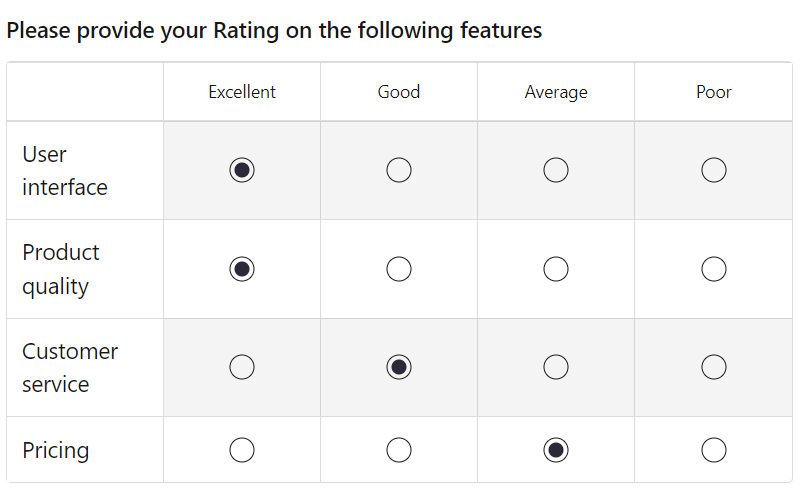
- Matrix Multiple: Enables respondents to select multiple options within a grid-like structure. Suitable for scenarios where users may have more than one response to a question, such as selecting all relevant interests or preferences.
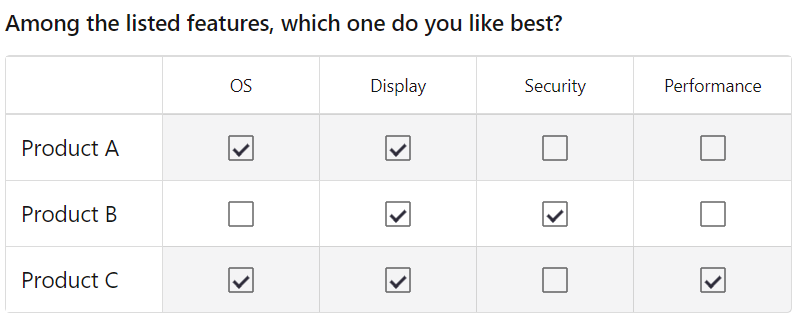
- Matrix Dropdown: Presents respondents with dropdown menus within a matrix format, offering a compact and organized way to gather data. Useful for situations where a large number of options need to be displayed without cluttering the interface.
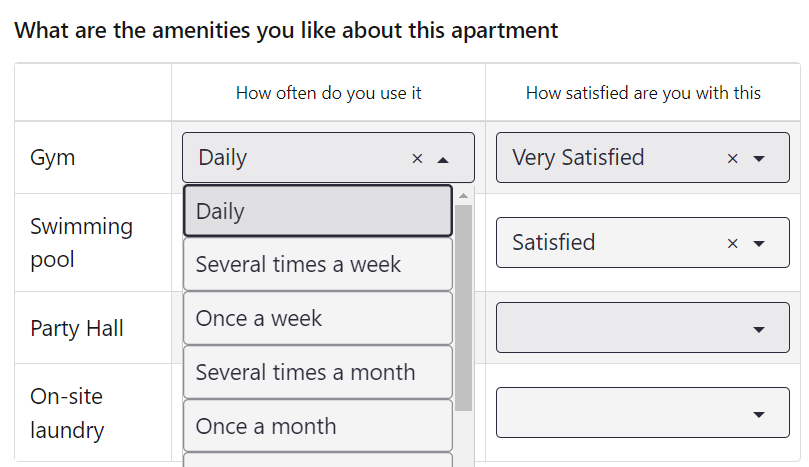
- Matrix Text: Provides respondents with text fields within a matrix layout, allowing them to input textual responses for each item. Effective for collecting qualitative data, comments, or feedback on multiple aspects of a topic.
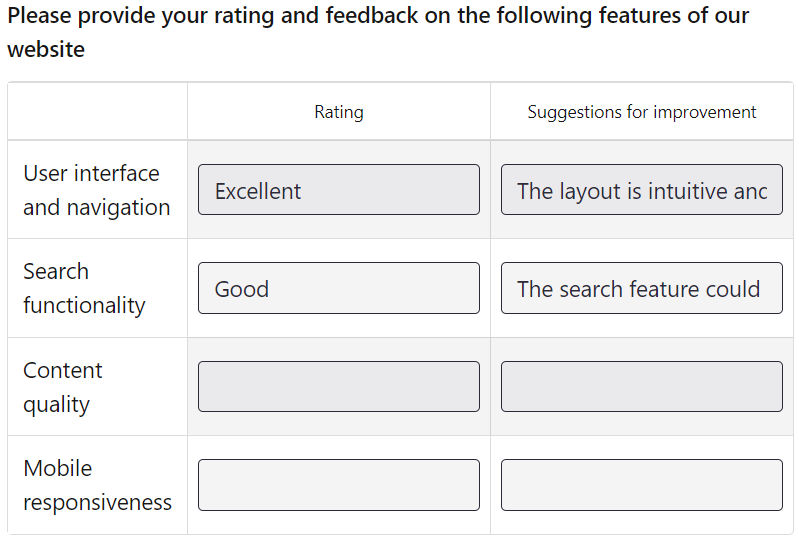
- Matrix Number: Requires respondents to input numerical values corresponding to each row and column intersection. Valuable for quantifiable data collection, such as ratings, scores, or measurements.
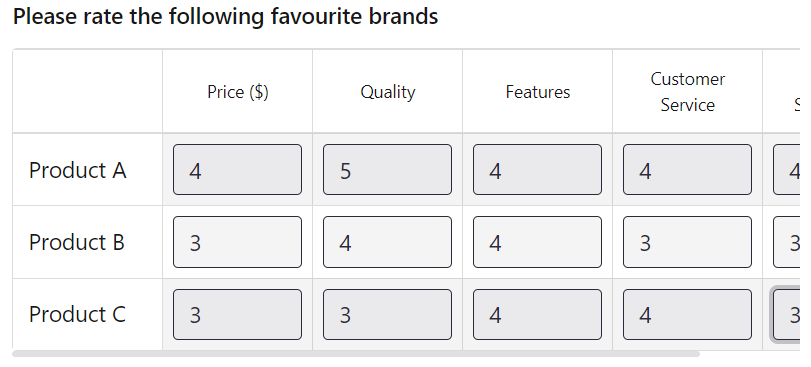
- Matrix Rating: Asks respondents to rate multiple items using a predefined scale within a matrix structure. Particularly useful for gauging satisfaction levels, performance evaluations, or opinion assessments across various criteria.
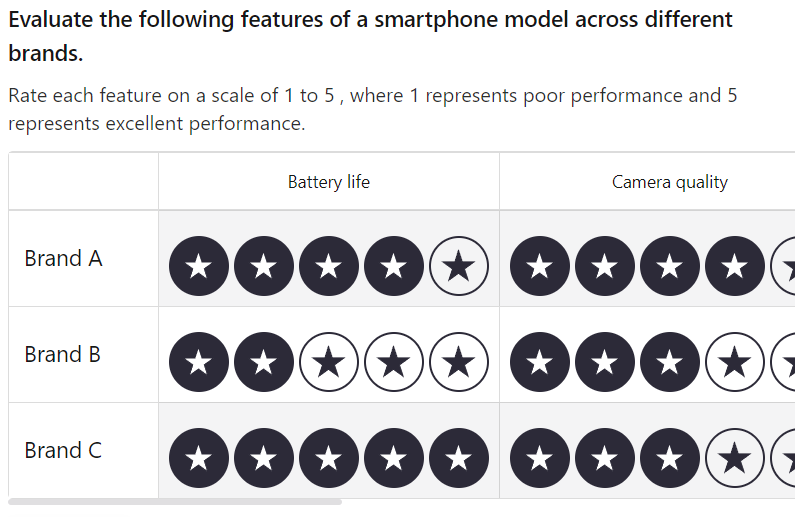
Why Matrix-Type Questions Are Important?
Matrix questions offer several key benefits that make them indispensable in survey design:
- Efficiency: By consolidating multiple inquiries into a single question, matrix-type questions streamline the survey-taking process, reducing respondent burden and minimizing survey fatigue.
- Data Organization: The structured layout of matrix questions facilitates data organization and analysis, enabling researchers to easily compare responses across different categories or dimensions.
- Enhanced Insights: By capturing data across multiple dimensions simultaneously, matrix questions provide richer insights into respondents' attitudes, preferences, and behaviors, fostering a deeper understanding of the subject matter.
- Improved Survey Experience: The intuitive design of matrix questions enhances the user experience by presenting information in a clear and concise format, resulting in higher response rates and improved data quality.
Conclusion
Incorporating matrix-type questions into your surveys empowers you to efficiently gather comprehensive data, gain valuable insights, and optimize the survey experience for both respondents and researchers alike. Whether you're conducting market research, gathering customer feedback, or evaluating employee satisfaction, leveraging matrix questions can elevate the effectiveness and impact of your surveys.
Get insights.
Unlock value.
- 14-day free trial
- Set up in minutes
- No credit card required





